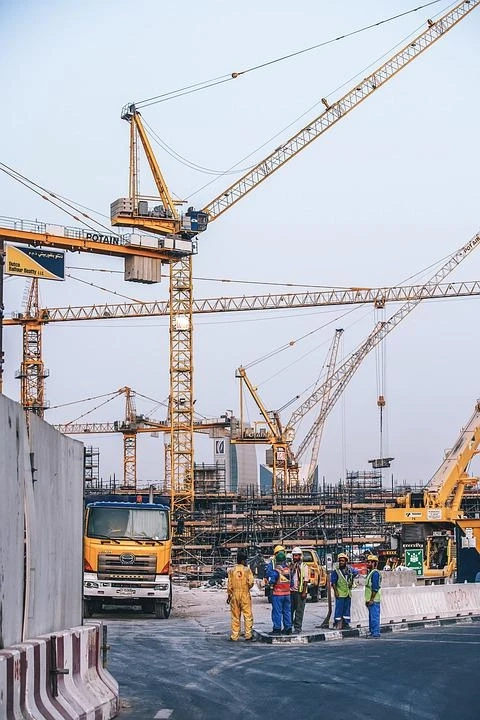Is your crane equipment not working up to the mark? Is it experiencing delays due to mechanical and lifting failures? Do you think suspended crane loads aren’t secure enough?
If your answer is a resounding yes, you must consider investing in below-the-hook lifting devices. Crane safety should be every project manager’s top priority. Maximizing employee safety and machine efficiency is imperative whether or not you’re working with a small, mobile crane or massive overhead lifting equipment.
Crane Warning Systems Atlanta is a renowned crane safety instrumentation distributor in the US. The company is an authorized RaycoWylie crane safety products seller and promises premium quality customer service at every step. Their 24/7 available live technical and phone call support teams ensure maximum client satisfaction and product understanding.
The company’s qualified crane safety experts evaluate, study, identify, and understand potential crane equipment failures and loading problems. And they strive to help customers (crane operators and managers) maximize their equipment’s performance.
In this detailed post, you will learn all about below-the-hook lifting equipment for cranes, their types, and their uses. So let’s delve into the details without further ado.
Below-the-Hook Lifting Devices—An Overview
According to the American Society of Mechanical Engineers (ASME), a below-the-hook, AKA BTH crane lifting tool is any device used for loading hoists. We can establish that these devices are the most critical tool in the entire lifting system. A below-the-hook lifting device for cranes comprises several parts such as:
Crane screwsSlingsHooksRigging toolsWire ropesJibs and BoomBTH devices are attached to a crane’s sling and used to secure a load before loading, lifting, and unloading. BTH devices and their performance significantly depend on the quality and efficiency of crane warning systems like a load moment and rated capacity indicator. Crane operators need to stay atop a crane’s weight limit, and an LMI system is the perfect apparatus.
BTH crane lifting devices are available in pre-designed and custom-designed options. Crane owners can talk to BTH device designers and manufacturers and get custom equipment made for their unique crane type. What’s more, a below-the-hook lifting device can also be created by modifying existing tools.
Main Parts of a Below-the-Hook Lifting Equipment
A BTH device is made up of several parts and components, and we have discussed the most critical ones in this section.
Bail
A pin or plate styles attachment that allows crane operators to suspend a load on a crane hook
Lifting Lug
The lifting lug is the main component on which a load suspends and is affixed before moving
Stress-Balancing Gusset
Gussets are high-grade BTH component that withstands pressure and stress during heavy-duty lifting
Lifter Latches
Latches are connective components that secure loads in place in moving and mobile conditions
You should install crane warning systems no matter how complex and effective your below-the-hook lifting device is. Devices such as Anti-two blocking systems, load moment indicators, and rated capacity indicators can optimize crane safety and maximize employee safety.
What Are Below-the-Hook Lifting Devices Used for?
Below-the-hook lifting apparatus is excellent for lifting heavy-duty construction and industrial-grade loads such as dry walls, pipes, pallets, stacking coils, oil barrels, containers, and steel rods.
However, Crane operators must obtain proper training on using BTH devices as they can only be used to lift angular and structural objects. Crane operators should avoid lifting fragile or hazardous chemical-containing boxes using BTH devices.
The Most Common Types of Below-the-Hook Lifting Devices for Cranes
Crane owners should invest in BTH devices to improve overall project efficiency and reduce load movement and management delays. According to the experts at Crane Warning Systems Atlanta, crane owners should consider installing the following BTH devices:
Coil hookGripping latchesMechanical and operational liftersBeams for pallet lifterDrum and magnetic lifterQuality Safety Products and Warning Devices for Cranes in the US
Crane Warning Systems Atlanta provides a wide array of crane safety devices and products, including the RaycoWylie RCI-LMI system for telescopic boom cranes. The firm has been providing excellent crane safety devices since 2001 and has managed to maintain an impressive client portfolio!
The firm has a highly responsive and professional team of crane safety device experts offering 24/7 live technical support and phone support. They’re always available to help commercial and industrial businesses choose, install, and operate different types of crane installations and safety devices.
Thanks to Crane Warning Systems Atlanta, complying with OSHA requirements, improving crane safety, and boosting employee wellbeing aren’t difficult tasks anymore! Explore their website to invest in the best quality, branded, and original crane safety equipment in the US.
For more details or a free quote, contact them today.
About the Author
This blog’s author, Mike, is an experienced crane inspection and repair specialist. He has been associated with various crane safety organizations for over 15 years. He regularly shares his opinions, tips, and guides on Crane Warning Systems Atlanta’s blog section.
0


